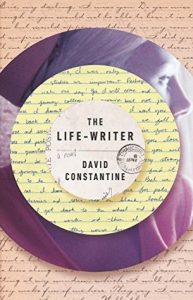 How well do we really know the people we love? It’s a trite question, but one I’d wager most of us ponder at one point or another. In The Life-Writer, David Constantine manages to inhabit both the reality in which we know as little as we fear and the one in which we know enough. It’s the story of Katrin, the much-younger second wife of Eric, and her search through his letters and history in the days following his death to find the person he was before they were married. Perhaps because Eric sets Katrin on this course, using his final hour to describe the first leg of the journey that changed him forever, or perhaps because Katrin’s chosen occupation is writing biographies of little-known people in famous circles who never found fame on their own—whatever the exact reason is, this could-be-pat book is instead a deep, thoughtful, and satisfying exploration of what it means to love.
How well do we really know the people we love? It’s a trite question, but one I’d wager most of us ponder at one point or another. In The Life-Writer, David Constantine manages to inhabit both the reality in which we know as little as we fear and the one in which we know enough. It’s the story of Katrin, the much-younger second wife of Eric, and her search through his letters and history in the days following his death to find the person he was before they were married. Perhaps because Eric sets Katrin on this course, using his final hour to describe the first leg of the journey that changed him forever, or perhaps because Katrin’s chosen occupation is writing biographies of little-known people in famous circles who never found fame on their own—whatever the exact reason is, this could-be-pat book is instead a deep, thoughtful, and satisfying exploration of what it means to love.
In Our Grief
I live with more than the normal amount of fear that I will lose everyone I love. It comes from an illness my mom suffered early in my childhood that I didn’t properly understand. I didn’t lose her, but ever since I’ve been plagued by the reality that the people I love and depend on could evaporate at any moment. So I can sometimes be found wallowing in crap narratives like The Notebook by Nicholas Sparks that allow me to mournfully sob and then brush off the sadness with the manipulated plot and move on with my life.
So you’d think a book that starts with a chapter devoted entirely to a wife saying goodbye to her dying husband would drop me into my feelings bucket from which I’d emerge at the end of the book. But no, David Constantine is too fine a writer to depend on tropes and cardboard characters. Instead, he held me inside that moment I so deeply fear and made me care so deeply about the characters that I wanted to stay with them through their grief and through their lives. Because Katrin does go on after Eric dies. There is life after death. And though she spends the bulk of the part of her life that this book chronicles looking for the keys to Eric, she also allows herself to be pulled forward into a post-Eric stage of life where “the fact is fixed, but my attitude towards it is mine to fashion as I please.”
“Later, during passages of grief in which love and its sorrow took the form of self-recrimination, she accused herself of harbouring the thought [what about me when you leave me here, aging alone and we were never young together?] as one might a grievance, for some future occasion, to be brought up and deployed in an argument against the person you could not live your life without. Such a sad and cruel argument. For by then he was not there to answer back.” – David Constantine
It doesn’t hurt, either, that Constantine’s sentences are gorgeous. I actually read this book very slowly because I was taking such pleasure in underlining passages and conversing with the characters via marginalia.
We, the Living
“Your grief is a measure of your love, be glad if you can, rejoice if you can, grieving you love him, in your heart of hearts you would not want it any different.” – David Constantine
Though I’m not actually sure I agree that our grief is a measure of our love, this book made me appreciate how much life goes on after we lose someone who feels like our whole world. This is something I’m able to appreciate a little more these days after the very painful (and very expected) loss of my grandmother in 2011. Though we all knew how ready she was to go, the whole family was rocked by her passing and I continued to feel her loss every time I experienced some new wonderful stage of life I wished I could share with her—getting married, having a son, watching my boy take his first steps. In the month or so since I read this book, I can feel that feeling of loss fading. I still think about her all the time, but Constantine helped me find a place where I can love her and miss her without dissolving into tears. Although I still wish I could share my life’s wonders and struggles with her, I now realize she’s inside me and that I have a pretty good idea what she would have said and how her voice would have sounded when she did, and I can create the conversations I need to have.
In The Life-Writer, Katrin goes through a similar shift. Though her journey is an outward one—writing, traveling, and meeting with anyone who remembers the man her husband was before she knew him, I still had the feeling she was absorbing him into her being. As much as she may have thought she was seeking out a man who might have settled for her and the story of the woman he loved most, she was really reconciling herself to the man she did know so well.
It’s especially beautiful (and sometimes painful) to watch Katrin interact with her husband’s best friend, Daniel. Daniel is the one character who was present in Eric’s life both during the phase of glorious youth and also later when he became the (somewhat) settled professor who married Katrin. There is a tension between Daniel and Katrin that I took at times to be sexual, but the more interesting aspect of their relationship is the shared loss of a man they both knew in their own way. As Katrin seeks out Daniel as the source of the truth about Eric’s love, she engages deeply with who Eric was then but also who Daniel was then. What’s sad is how much she fails to see Daniel as he is now, a fellow in grief. It reminded me of the days following my grandmother’s death when I quibbled with my uncle over her obituary, forgetting entirely that he’d just lost his mother.
Who We Were Then
I don’t think I’m ruining the book by saying that Katrin has at her hands even in the beginning what she truly needs to know. Though she was perfectly suited to be handed the mantle of the quest, she did not seek it out. She knew her husband as he was when he married her and as he was when he died. As she also knew Daniel throughout that time. Though the experiences of their youth shaped these men, I couldn’t help feeling that they were less people when they were young. That isn’t quite right because of course they were people—interesting ones at that, but the living of their lives made them even richer humans with each passing year.
I think of my own husband and of myself when we were young and interesting. I’m lucky to have known him then because I’ve loved seeing the formation of his character over the years, but if I met him tomorrow, he’d already embody those things that formed him. He’d have moved past some, he’d be processing others, but he’d be the gorgeous, sensitive, thoughtful, and brilliant artist, father, and partner I see in front of me every day.
I guess what I’m saying is that we are whole now. I am as was wholly who I was at 38 as I was at 16 or 25. But there’s something about living that makes a 25-year-old look back and see a 16-year-old as less than whole or a 38-year-old looking back at any of them. I try to appreciate who I was and why I made the choices I did, but I am even more me now than ever. Not in an end of the life sort of cornered way, either. I feel fuller and wiser for the experience but I no more want to go back than I want to leap forward and miss the things that will enrich me in the next four decades.
Maybe in the end we know the people we love as well as we know ourselves. At least when it comes to the important bits.
To read the story of The Life-Writer, pick up a copy from Powell’s Books. Your purchase keeps indie booksellers in business and I receive a commission.
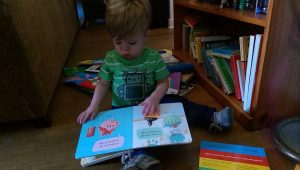
 The rhythms of this book are fantastic. It’s a lot of fun to read aloud and I think my poetry has gotten better as a result. Making animal sounds is supposed to be a good way to help kids learn language and Remy seems to love when I dig in next to his ear and announce, “BOOM BOOM BOOM Mr. Brown is a wonder. BOOM BOOM BOOM Mr. Brown makes thunder.”
The rhythms of this book are fantastic. It’s a lot of fun to read aloud and I think my poetry has gotten better as a result. Making animal sounds is supposed to be a good way to help kids learn language and Remy seems to love when I dig in next to his ear and announce, “BOOM BOOM BOOM Mr. Brown is a wonder. BOOM BOOM BOOM Mr. Brown makes thunder.”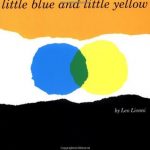 This is one of the books the library very wisely allows parents to take out on loan permanently. We all know what kids can do to books. No one wants them back after they’ve been out on loan. But the book is terrible. Little Blue leaves the house when his mama tells him not to (after she’s left him home alone). He and his friend Little Yellow cry so hard that they meld identities and their parents no longer recognize them. The illustrations appear to be made of torn paper. I don’t know why I keep reading it to my son.
This is one of the books the library very wisely allows parents to take out on loan permanently. We all know what kids can do to books. No one wants them back after they’ve been out on loan. But the book is terrible. Little Blue leaves the house when his mama tells him not to (after she’s left him home alone). He and his friend Little Yellow cry so hard that they meld identities and their parents no longer recognize them. The illustrations appear to be made of torn paper. I don’t know why I keep reading it to my son. Torn paper done right. I still vaguely remember doing kindergarten projects with tissue paper in imitation of Carle’s iconic style and was delighted when my husband wanted to buy a copy that came with a little stuffed caterpillar for our little baby. Though the sentences are a little long and meandering, I love the focus on days of the week and counting and the story’s good. Even if it makes me want ice cream cones. We used to read the book with the caterpillar weaving in and out of the holes in the pages. But now Remy’s all business and I have to hurry if I want to get to the end. Bonus Eric Carle book is the aforementioned Brown Bear—talk about rhythm and I think the repetition is really good for language learning. I was dreading the day someone would tell me I look like the teacher in the book. It happened. I lived.
Torn paper done right. I still vaguely remember doing kindergarten projects with tissue paper in imitation of Carle’s iconic style and was delighted when my husband wanted to buy a copy that came with a little stuffed caterpillar for our little baby. Though the sentences are a little long and meandering, I love the focus on days of the week and counting and the story’s good. Even if it makes me want ice cream cones. We used to read the book with the caterpillar weaving in and out of the holes in the pages. But now Remy’s all business and I have to hurry if I want to get to the end. Bonus Eric Carle book is the aforementioned Brown Bear—talk about rhythm and I think the repetition is really good for language learning. I was dreading the day someone would tell me I look like the teacher in the book. It happened. I lived.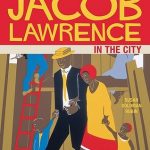 Arty parents trying to expose their kids to arty books can’t really go wrong with this book. The author does a good job of incorporating a blues rhythm into the text and I enjoyed getting to know more of Lawrence’s work. There’s also a book in this series that uses Magritte’s work that is more imaginative but the text and images in the Lawrence book work better together overall.
Arty parents trying to expose their kids to arty books can’t really go wrong with this book. The author does a good job of incorporating a blues rhythm into the text and I enjoyed getting to know more of Lawrence’s work. There’s also a book in this series that uses Magritte’s work that is more imaginative but the text and images in the Lawrence book work better together overall. Speaking of arty books, I adore Tullet’s books. I sometimes fantasize about my husband becoming a childrens’ book illustrator and these books feed that fantasy. This one doesn’t have any words, but it’s filled with abstract illustrations cut at odd angles and I like seeing what picture Remy will make with it next. You may have heard of Press Here which is a super fun book to read and I think will get better as Remy gets older. My least favorite Tullet so far is The Game of Red, Yellow and Blue. The color combinations are okay and I like the shape cutouts, but the “Fab-racadabra” rainbow carnival at the end does not translate well into English.
Speaking of arty books, I adore Tullet’s books. I sometimes fantasize about my husband becoming a childrens’ book illustrator and these books feed that fantasy. This one doesn’t have any words, but it’s filled with abstract illustrations cut at odd angles and I like seeing what picture Remy will make with it next. You may have heard of Press Here which is a super fun book to read and I think will get better as Remy gets older. My least favorite Tullet so far is The Game of Red, Yellow and Blue. The color combinations are okay and I like the shape cutouts, but the “Fab-racadabra” rainbow carnival at the end does not translate well into English.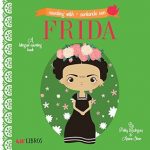 One of the things I’ve been trying to make sure Remy gets is exposure to other languages. I started reading him Garcia Lorca really early on and when I saw this adorable little book, I thought it would be a good chance to learn to count and for me to get my tongue around Spanish in ways that we could both practice. The illustrations are so attractive and I liked the book so much that we now have all of the books in the series. Probably the second best is Lucha Libre Anatomy/Anatomia and not just because I like shouting “ombligo!” on the belly button page.
One of the things I’ve been trying to make sure Remy gets is exposure to other languages. I started reading him Garcia Lorca really early on and when I saw this adorable little book, I thought it would be a good chance to learn to count and for me to get my tongue around Spanish in ways that we could both practice. The illustrations are so attractive and I liked the book so much that we now have all of the books in the series. Probably the second best is Lucha Libre Anatomy/Anatomia and not just because I like shouting “ombligo!” on the belly button page. This is another book I liked so much that I bought everything else by Cliff Wright I could find. It’s a very simple book with just a couple of words on each page that match the illustration. Still, Wright achieves a kind of story with the pictures and I love the summary at the end where you can see all the pages at once. The rhyming is nice, too.
This is another book I liked so much that I bought everything else by Cliff Wright I could find. It’s a very simple book with just a couple of words on each page that match the illustration. Still, Wright achieves a kind of story with the pictures and I love the summary at the end where you can see all the pages at once. The rhyming is nice, too.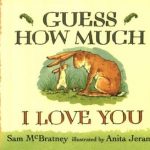 I knew this book was a classic and I loved the sentiment of not being able to quantify the amount of love a parent has for a child. What I wasn’t prepared for is how competitive it is. Geez Big Nutbrown Hare, just let your kiddo have the upper hand one time fer Chrissakes.
I knew this book was a classic and I loved the sentiment of not being able to quantify the amount of love a parent has for a child. What I wasn’t prepared for is how competitive it is. Geez Big Nutbrown Hare, just let your kiddo have the upper hand one time fer Chrissakes.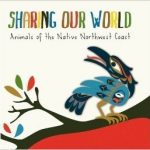 One of the wonderful things about having a community of people around you when you have a baby is that they expose you to new things. I’ve always resisted Native American art because I didn’t understand it. But a Native friend gave this book to us at a baby shower and I love learning about the iconography of Native Northwest coast tribes and also some of the lore that accompanies it. Like the books says, “Raven teaches us to be clever and creative” and I’m really glad my son will have some exposure to a culture that’s very important in the area he calls home.
One of the wonderful things about having a community of people around you when you have a baby is that they expose you to new things. I’ve always resisted Native American art because I didn’t understand it. But a Native friend gave this book to us at a baby shower and I love learning about the iconography of Native Northwest coast tribes and also some of the lore that accompanies it. Like the books says, “Raven teaches us to be clever and creative” and I’m really glad my son will have some exposure to a culture that’s very important in the area he calls home.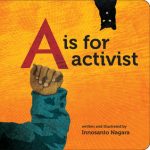 Some books are written for parents. This is one of them. I’m a socialist. I’d love for my son to be politically involved and try to make the world he lives in a better place. I don’t often read him this book, though, because there are a few things I need to teach him before he absorbs messages like “No! No! No! Yes to what we want. No to what must go.”
Some books are written for parents. This is one of them. I’m a socialist. I’d love for my son to be politically involved and try to make the world he lives in a better place. I don’t often read him this book, though, because there are a few things I need to teach him before he absorbs messages like “No! No! No! Yes to what we want. No to what must go.”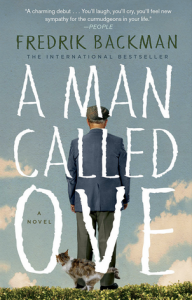 This week my Facebook feed is filled with #meinthree posts: stacks and stacks of status updates where my friends describe their best traits in terms of beloved characters from Alcott, Rowling, and beyond. Also this week I met the character who might be the most like me: Ove from Fredrik Backman’s A Man Called Ove.
This week my Facebook feed is filled with #meinthree posts: stacks and stacks of status updates where my friends describe their best traits in terms of beloved characters from Alcott, Rowling, and beyond. Also this week I met the character who might be the most like me: Ove from Fredrik Backman’s A Man Called Ove.  This second book of the Maisie Dobbs mysteries has a smartly dressed woman on the cover with fabulous roadster and a lot of birds flying about. It’s set in 1930s Britain as Maisie tries to figure out what happened to the daughter of her client because the girl seems to have disappeared. The mystery is interesting and well-plotted. There are even some unusual elements about it (no, I won’t spoil them for you), but what I loved most about this book is imagining Baba reading it.
This second book of the Maisie Dobbs mysteries has a smartly dressed woman on the cover with fabulous roadster and a lot of birds flying about. It’s set in 1930s Britain as Maisie tries to figure out what happened to the daughter of her client because the girl seems to have disappeared. The mystery is interesting and well-plotted. There are even some unusual elements about it (no, I won’t spoil them for you), but what I loved most about this book is imagining Baba reading it. I kept looking for the mystery in this quiet novel set in Edinborough because the other books I’d read by McCall Smith were in the Ladies Detective Agency series. Instead I was surprised by a smartly modern narrative about an older woman and the life she’s choosing the make for herself. I write “older” though the character is 40 because I mixed Isabel Dalhousie up with Baba somewhere in my brain and averaged them out at 60-something.
I kept looking for the mystery in this quiet novel set in Edinborough because the other books I’d read by McCall Smith were in the Ladies Detective Agency series. Instead I was surprised by a smartly modern narrative about an older woman and the life she’s choosing the make for herself. I write “older” though the character is 40 because I mixed Isabel Dalhousie up with Baba somewhere in my brain and averaged them out at 60-something.  There are a lot of reasons I haven’t blogged lately. Only one of them is that I’ve been having trouble finding the right book. I don’t have enough to say about my troubled relationship with Winnie the Pooh or a deep enough understanding of Taoism to make my thoughts on The Te of Piglet worth sharing. The random thoughts that catch my attention in Nobody’s Home aren’t concrete enough to justify me blogging about Ugrešić
There are a lot of reasons I haven’t blogged lately. Only one of them is that I’ve been having trouble finding the right book. I don’t have enough to say about my troubled relationship with Winnie the Pooh or a deep enough understanding of Taoism to make my thoughts on The Te of Piglet worth sharing. The random thoughts that catch my attention in Nobody’s Home aren’t concrete enough to justify me blogging about Ugrešić